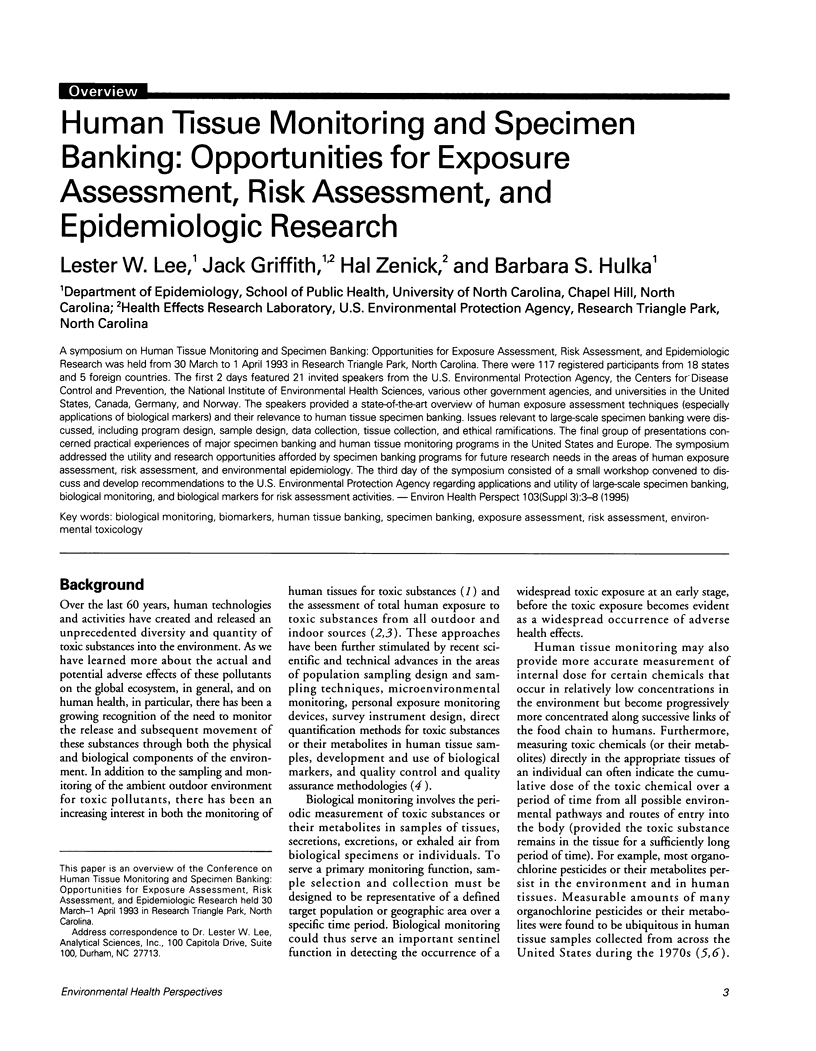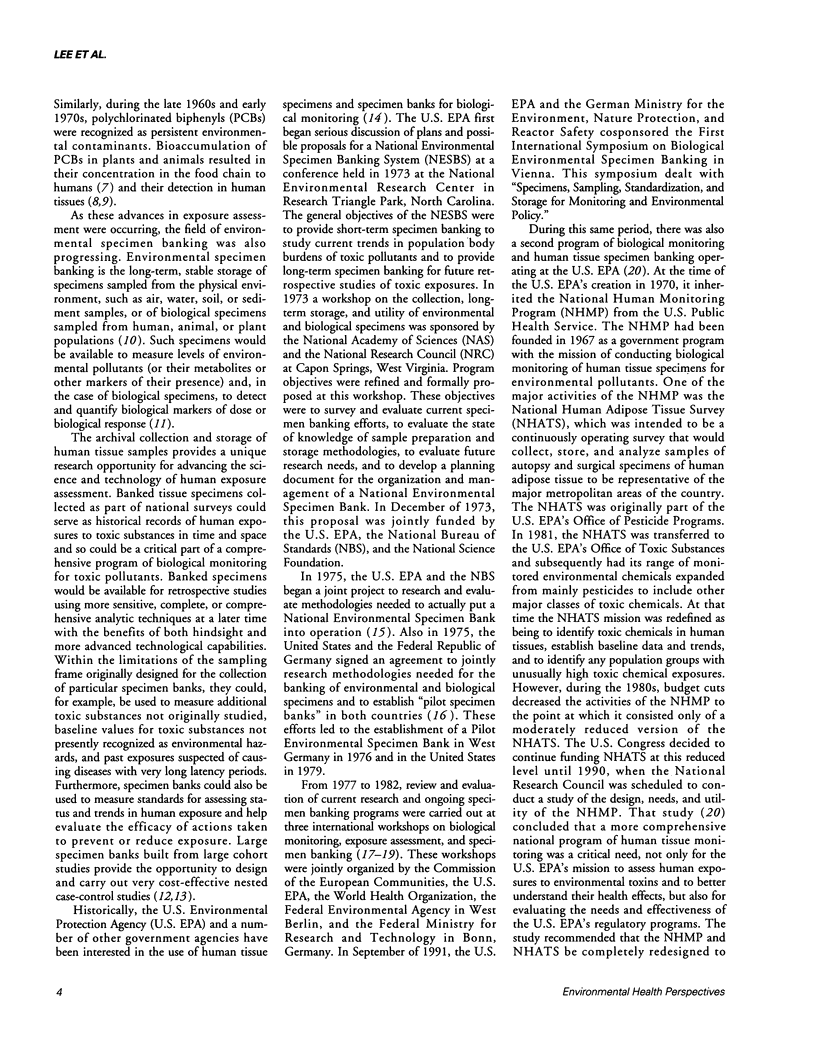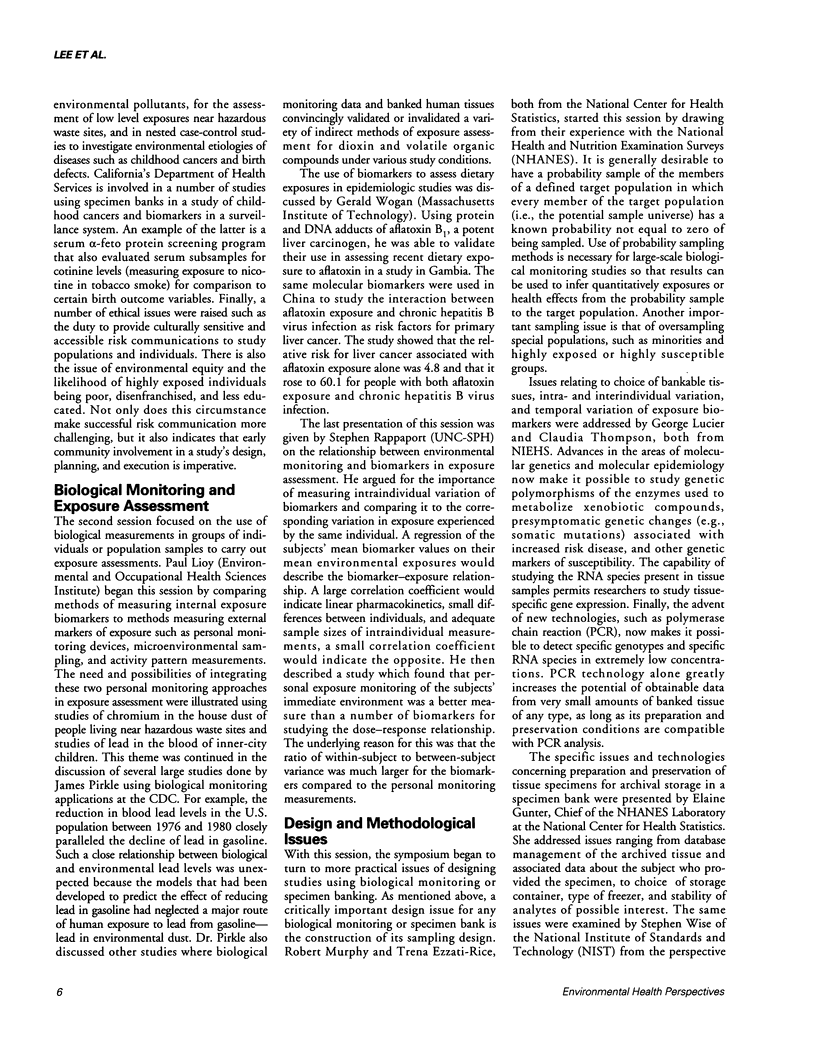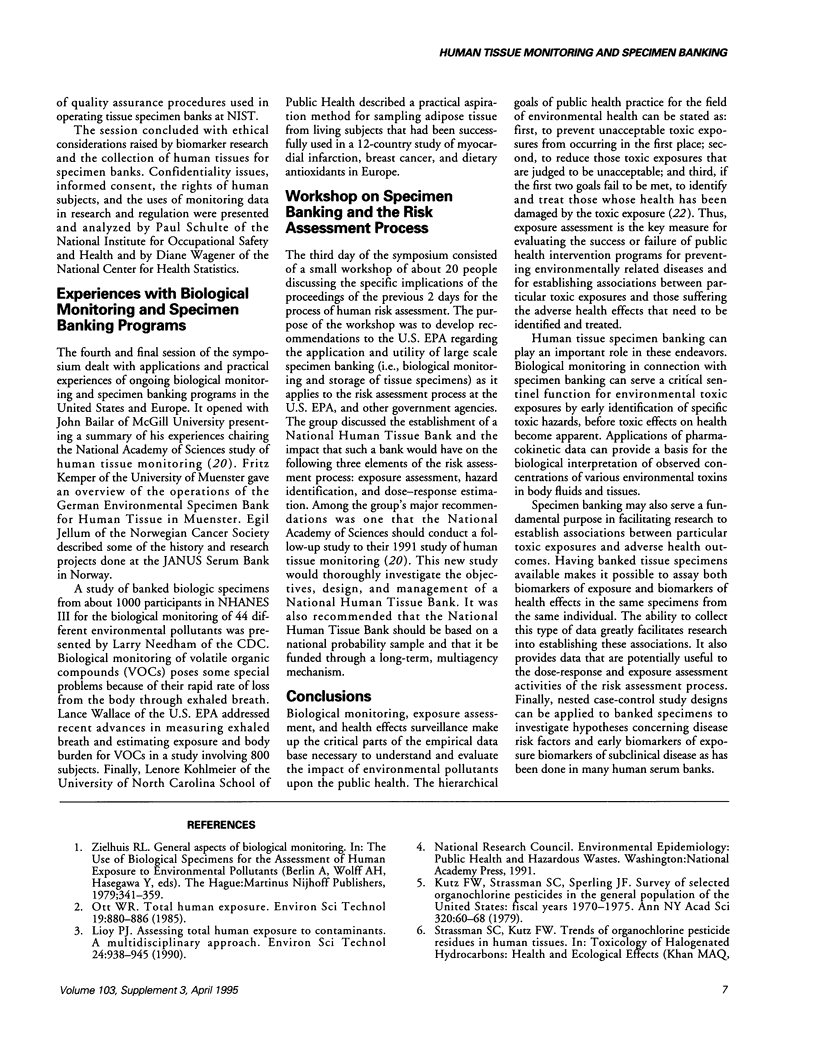Abstract
A symposium on Human Tissue Monitoring and Specimen Banking: Opportunities for Exposure Assessment, Risk Assessment, and Epidemiologic Research was held from 30 March to 1 April 1993 in Research Triangle Park, North Carolina. There were 117 registered participants from 18 states and 5 foreign countries. The first 2 days featured 21 invited speakers from the U.S. Environmental Protection Agency, the Centers for Disease Control and Prevention, the National Institute of Environmental Health Sciences, various other government agencies, and universities in the United States, Canada, Germany, and Norway. The speakers provided a state-of-the-art overview of human exposure assessment techniques (especially applications of biological markers) and their relevance to human tissue specimen banking. Issues relevant to large-scale specimen banking were discussed, including program design, sample design, data collection, tissue collection, and ethical ramifications. The final group of presentations concerned practical experiences of major specimen banking and human tissue monitoring programs in the United States and Europe. The symposium addressed the utility and research opportunities afforded by specimen banking programs for future research needs in the areas of human exposure assessment, risk assessment, and environmental epidemiology. The third day of the symposium consisted of a small workshop convened to discuss and develop recommendations to the U.S. Environmental Protection Agency regarding applications and utility of large-scale specimen banking, biological monitoring, and biological markers for risk assessment activities.
Full text
PDF





Selected References
These references are in PubMed. This may not be the complete list of references from this article.
- Drotman D. P., Baxter P. J., Liddle J. A., Brokopp C. D., Skinner M. D. Contamination of the food chain by polychlorinated biphenyls from a broken transformer. Am J Public Health. 1983 Mar;73(3):290–292. doi: 10.2105/ajph.73.3.290. [DOI] [PMC free article] [PubMed] [Google Scholar]
- Krieger N., Wolff M. S., Hiatt R. A., Rivera M., Vogelman J., Orentreich N. Breast cancer and serum organochlorines: a prospective study among white, black, and Asian women. J Natl Cancer Inst. 1994 Apr 20;86(8):589–599. doi: 10.1093/jnci/86.8.589. [DOI] [PubMed] [Google Scholar]
- Kutz F. W., Strassman S. C., Sperling J. F. Survey of selected organochlorine pesticides in the general population of the United States: fiscal years 1970-1975. Ann N Y Acad Sci. 1979 May 31;320:60–68. doi: 10.1111/j.1749-6632.1979.tb56593.x. [DOI] [PubMed] [Google Scholar]
- Nisbet I. C., Sarofim A. F. Rates and Routes of Transport of PCBs in the Environment. Environ Health Perspect. 1972 Apr;1:21–38. doi: 10.1289/ehp.720121. [DOI] [PMC free article] [PubMed] [Google Scholar]
- Schulte P. A. A conceptual framework for the validation and use of biologic markers. Environ Res. 1989 Apr;48(2):129–144. doi: 10.1016/s0013-9351(89)80029-5. [DOI] [PubMed] [Google Scholar]
- Schwartz P. M., Jacobson S. W., Fein G., Jacobson J. L., Price H. A. Lake Michigan fish consumption as a source of polychlorinated biphenyls in human cord serum, maternal serum, and milk. Am J Public Health. 1983 Mar;73(3):293–296. doi: 10.2105/ajph.73.3.293. [DOI] [PMC free article] [PubMed] [Google Scholar]
- Sexton K. Human exposure assessment and public health. Prog Clin Biol Res. 1991;372:455–466. [PubMed] [Google Scholar]
- Wolff M. S., Toniolo P. G., Lee E. W., Rivera M., Dubin N. Blood levels of organochlorine residues and risk of breast cancer. J Natl Cancer Inst. 1993 Apr 21;85(8):648–652. doi: 10.1093/jnci/85.8.648. [DOI] [PubMed] [Google Scholar]


